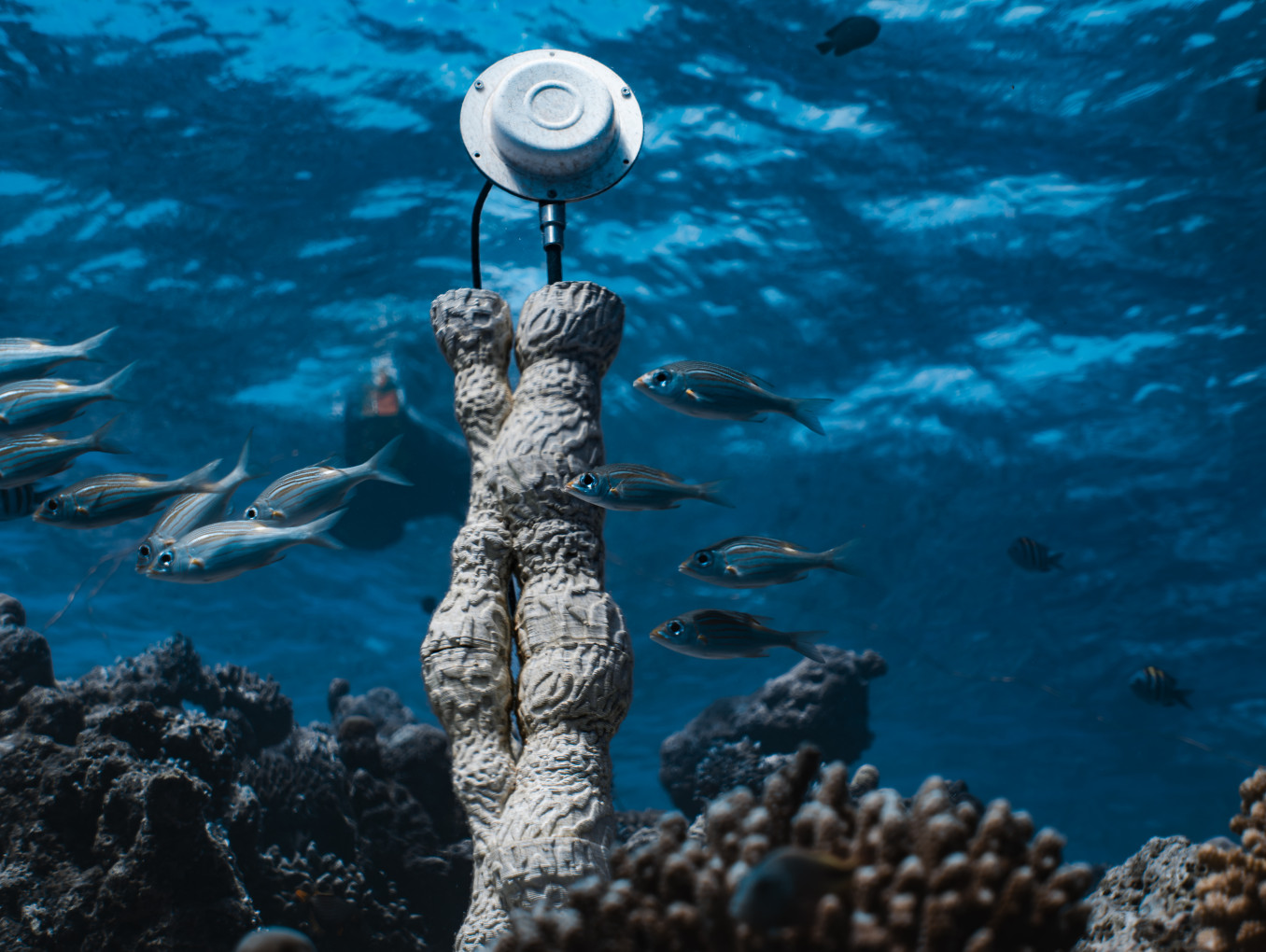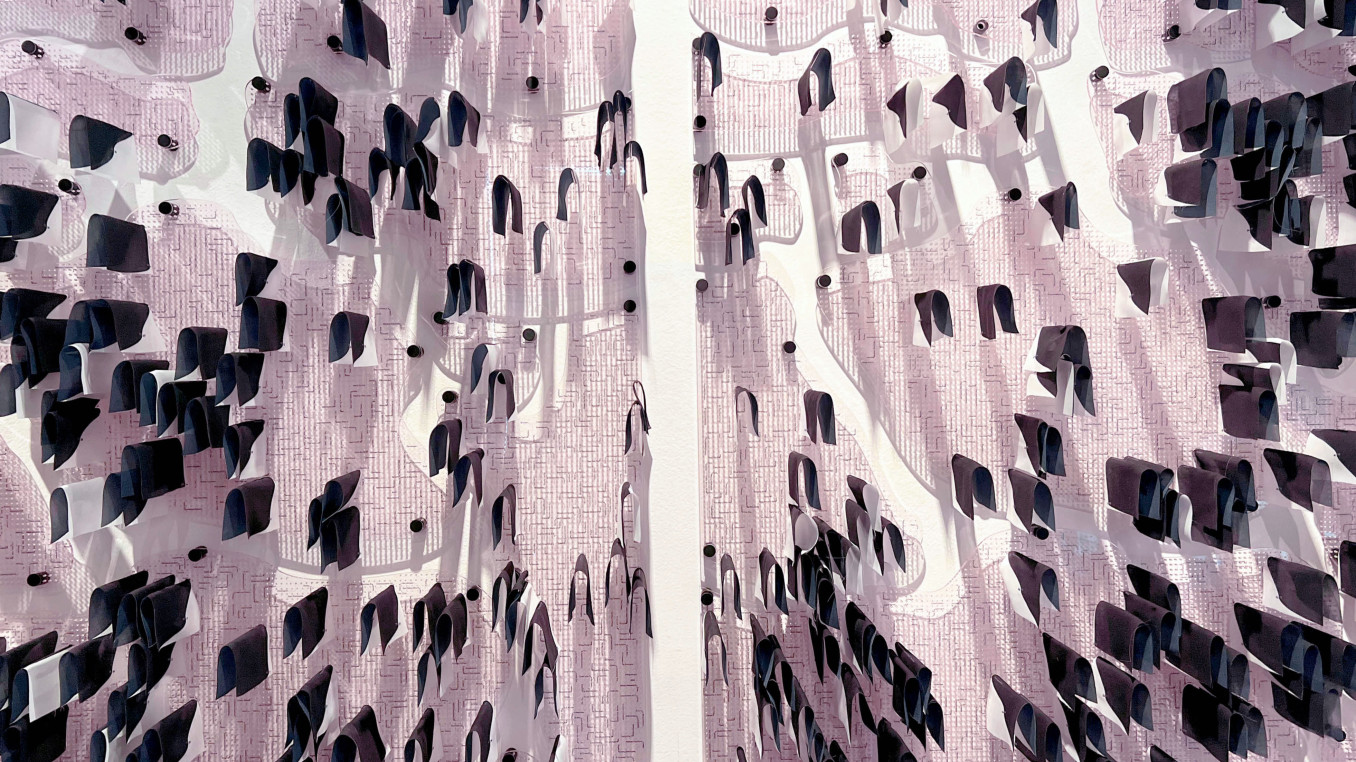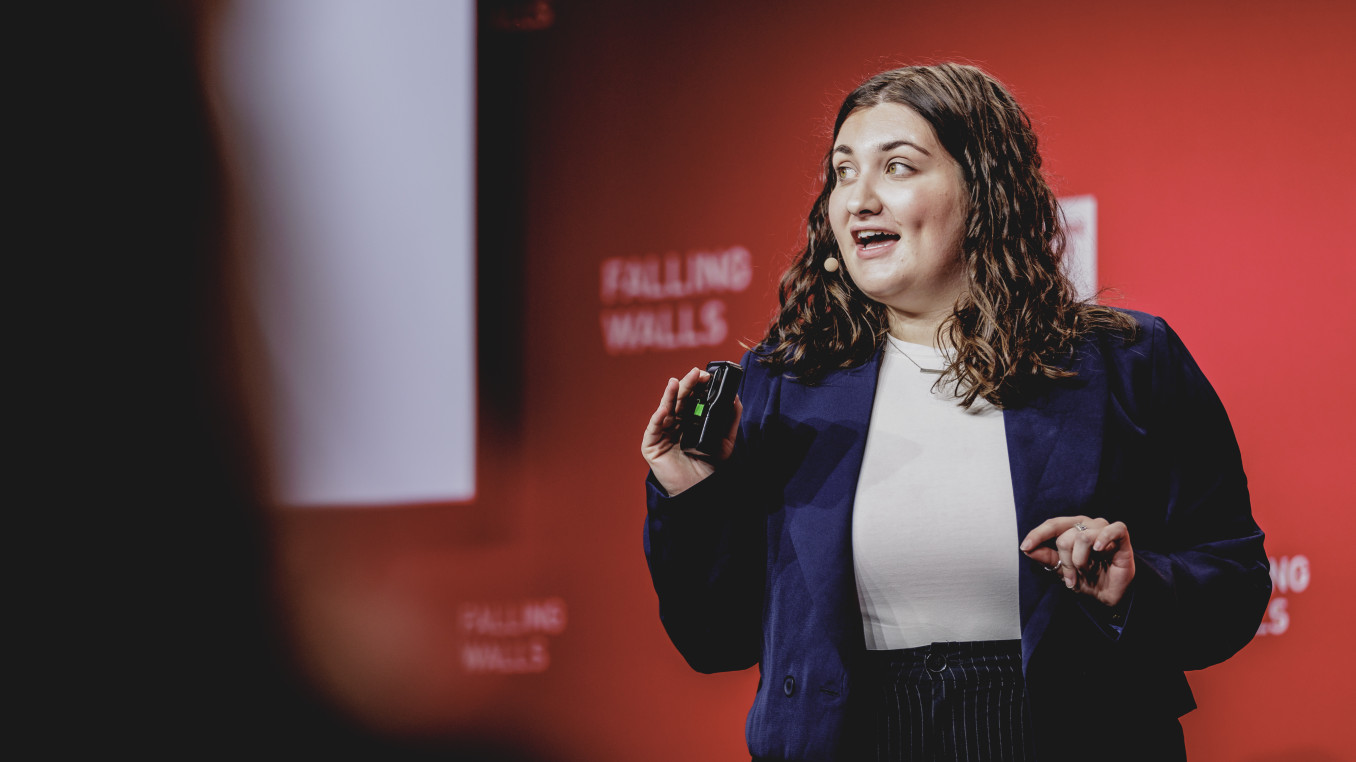Breaking the Wall of Ecological Healing through Sound
Breaking the Wall of Ecological Healing through Sound
Global Call 2025 Finalist Interview: Art & Science
Marco Barotti is a multimedia artist working at the intersection of art, science, sound and environmental research. His data-driven kinetic sound sculptures—crafted from audio technology, consumer electronics, waste and natural materials—form fictional “tech ecosystems” that mimic the behaviours of animals and plants. These works merge scientific inquiry with artistic imagination, raising awareness of the ecological and cultural realities of the Anthropocene.
Which wall does your research or project break?
By amplifying the fading voices of coral reefs, Coral Sonic Resilience breaks the wall of ecological silence—and opens a new path toward healing through sound. Coral reefs are among the most vital ecosystems on Earth, yet their decline often happens out of sight—and out of hearing. These environments are disappearing rapidly due to rising sea temperatures, pollution and other human-driven pressures. Still, their crisis remains largely unheard.
This project uses bioacoustics, art and marine science to shift that silence. Scientific research shows that healthy coral reefs are full of sound—snap, crackle, buzz—created by fish, invertebrates and other organisms. These soundscapes are crucial for orientation, reproduction and recruitment. When reefs degrade, they fall silent. But playing back recordings of healthy reef sounds into degraded colonies can help stimulate ecological recovery.
Coral Sonic Resilience brings this insight into action. Working closely with marine biologists and engineers, we’ve developed solar-powered underwater sound sculptures that play recorded soundscapes of healthy reefs in degraded areas, aiming to support restoration processes. These devices are not just tools—they are artworks, designed to communicate, attract marine life and engage the imagination.
At the same time, the project bridges science and public experience. In art institutions and cultural venues around the world, people are invited to immerse themselves in these underwater soundscapes—reconnecting emotionally and sensorially with environments they rarely encounter.
Ultimately, the project breaks the wall between worlds: between human and nonhuman, art and science, perception and intervention. It proposes that listening can be an act of ecological care—and that creativity has a role to play in the urgent work of environmental regeneration.
What is the main goal of your research or project?
The main goal of Coral Sonic Resilience is to use sound as a tool for ecological awareness and regeneration. By capturing and amplifying the acoustic life of coral reefs, the project fosters a deeper sensory connection between people and marine ecosystems under threat. It combines art, science and technology to study the role of sound in reef health and explore how acoustic enrichment might support restoration.
At its core, the project aims to shift perception—from seeing reefs as distant and passive to experiencing them as vibrant, sentient habitats alive with crackling shrimp, fish communication and other sonic expressions of life. Through underwater sound sculptures and public exhibitions, Coral Sonic Resilience invites people to listen differently, engage emotionally and reimagine their relationship with the ocean.
It’s not only about raising awareness, but about actively contributing to scientific research and restoration—creating new spaces where art and ecology meet in meaningful, restorative ways.
What advice would you give to young scientists or students interested in pursuing a career in research, or to your younger self starting in science?
Stay curious and stay close to what moves you. Science is often portrayed as something objective and detached, but at its core, it begins with wonder. Follow the questions that keep you awake at night—the ones that might seem too emotional, too poetic, or too unconventional. That’s often where the most meaningful research begins.
Don’t be afraid to blur the lines between disciplines. Whether you come from a background in science, art, or something else entirely, some of the most innovative breakthroughs happen when you allow different languages and ways of knowing to intersect. Listen deeply to the world, to others and to what’s not being said. Research is not just about data; it’s about attention.
And finally, be patient. Real change, in both ecosystems and ideas, takes time. But every step matters, especially when guided by care and intention.”
What inspired you to be in the profession you are today?
What inspired me was a deep curiosity for the unseen and unheard parts of nature—and a belief that art, sound and science together can be powerful tools to reveal, protect and reimagine our relationship with the more-than-human world.
What impact does your research or project have on society?
Coral Sonic Resilience transforms scientific insight into an emotional and sensory experience, helping people connect with the urgent challenges facing our oceans. By blending art and science, it fosters awareness, empathy and collective action for marine conservation.
What is one surprising fact about your research or project that people might not know?
One surprising fact is that healthy coral reefs are full of sound—clicks, crackles, and pops made by fish and invertebrates. These natural soundscapes help attract marine life and can even aid in the recovery of damaged reefs.
What’s the most exciting moment you've experienced over the course of your research or project?
One of the most exciting moments was hearing the first live underwater soundscapes played through our sculptures—knowing we were helping bring a reef back to life through sound and witnessing marine life begin to interact with the sculptures.


